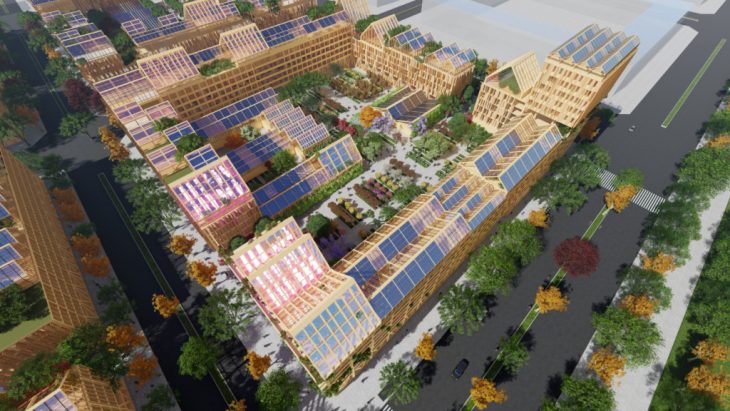 Guallart Architects, directed by Vicente Guallart MAEBB co-director, has won an international competition for the design of a mixed use community in the Xiong’an New City, defining a new standard in the post-COVID era, that can be applied as a raw model in different cities around the world.
Guallart Architects, directed by Vicente Guallart MAEBB co-director, has won an international competition for the design of a mixed use community in the Xiong’an New City, defining a new standard in the post-COVID era, that can be applied as a raw model in different cities around the world.
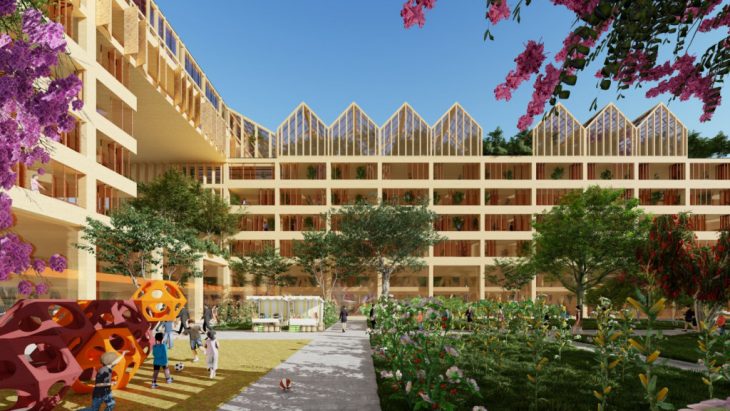
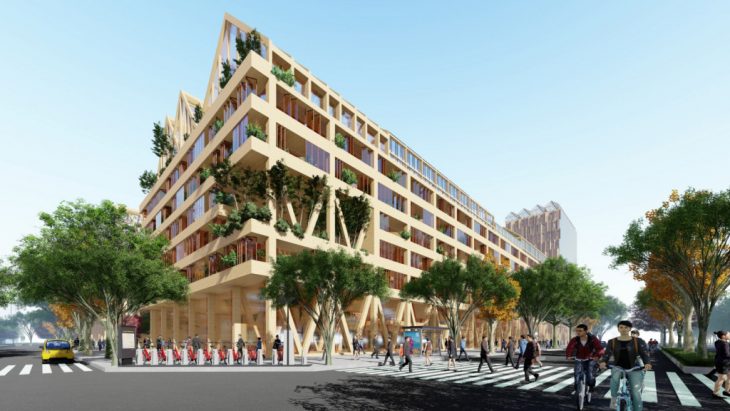 The competition, defined as “Xiong’an Architecture Design Contest with Chinese Characteristics under the High Quality Development principle” has received more than 300 projects organized in six categories, and will define the standards for this new emblematic city supported by President Xi, as a hub for the Beijing-Tianjin-Hebei economic triangle. The jurors for this international competition included Chinese academicians and local experts.
The competition, defined as “Xiong’an Architecture Design Contest with Chinese Characteristics under the High Quality Development principle” has received more than 300 projects organized in six categories, and will define the standards for this new emblematic city supported by President Xi, as a hub for the Beijing-Tianjin-Hebei economic triangle. The jurors for this international competition included Chinese academicians and local experts.
The proposal presented under the title “the self-sufficient city”, defines an urban model that merges the traditional European urban blocks, the Chinese modern towers, and the productive farming landscape. This new urban environment where people can live, work and rest, will allow their residents to produce resources locally while they are connected globally, providing a full life even in moments of confinement.
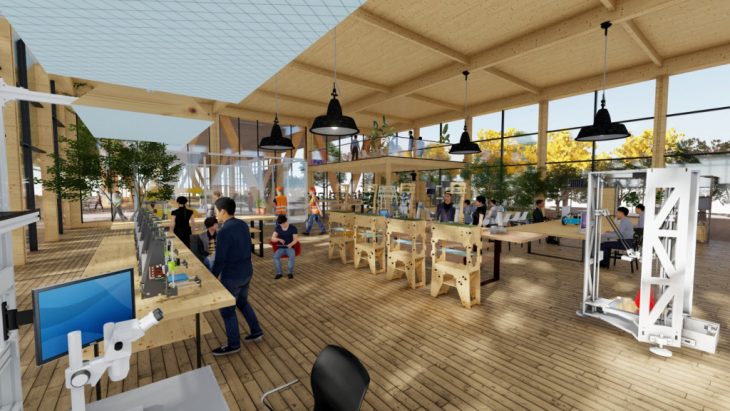 “We cannot continue designing cities and buildings as if nothing had happened,” says Guallart, ” Our proposal stems from the need to provide solutions to the various crises that are taking place in our planet at the same time, in order to create a new urban life based in the circular bioeconomy that will empower cities and communities”.
“We cannot continue designing cities and buildings as if nothing had happened,” says Guallart, ” Our proposal stems from the need to provide solutions to the various crises that are taking place in our planet at the same time, in order to create a new urban life based in the circular bioeconomy that will empower cities and communities”.
Specifically, the project is conceived as layers of onions, defining different functions needed for human life at different scales, from the home, to the building, to the community.
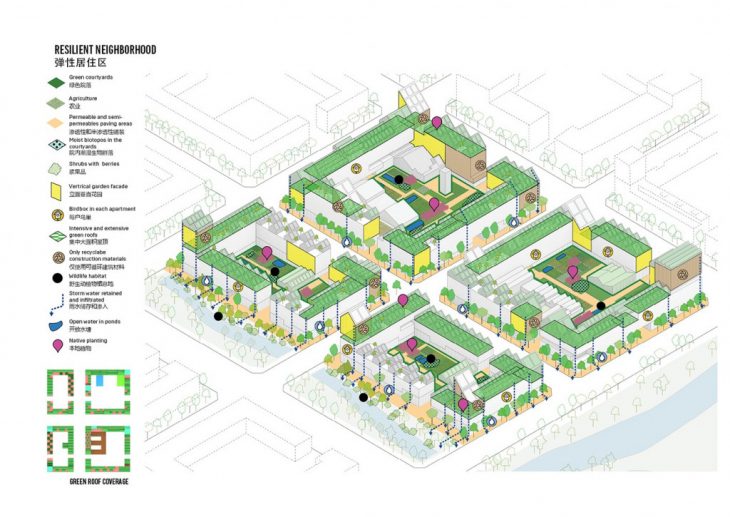
The four blocks, which will be built using mass timber and passive design solutions, will have mixed-use programs including apartments, residences for young and old people, offices, swimming pool, shops, a food market, kindergartens, an administrative center and a fire station among other facilities.
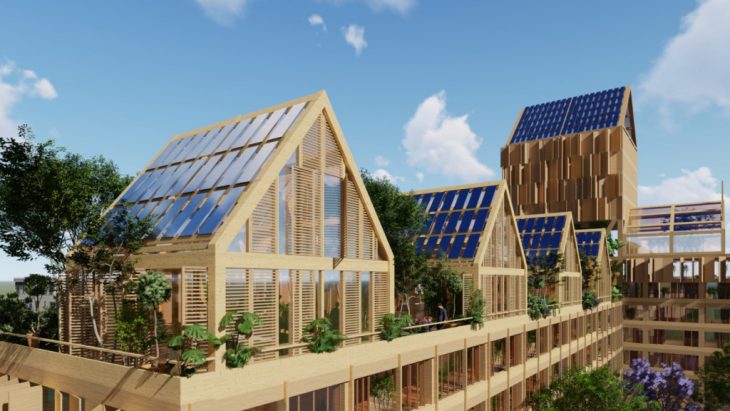
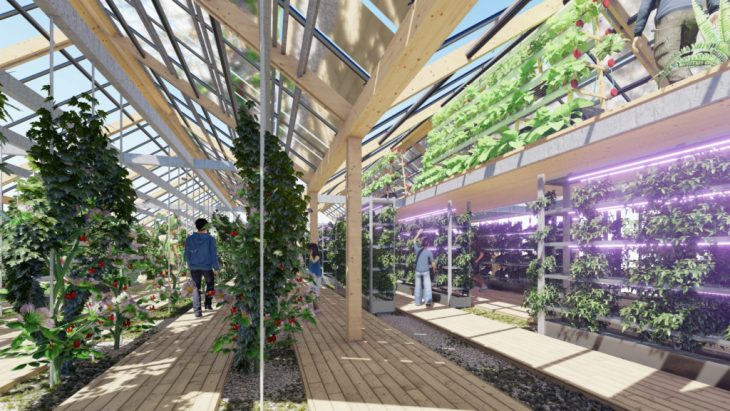 All buildings will be covered by greenhouses that will allow the production of food for daily consumption and will use their sloping roofs to produce energy. On the ground floor, small co-working digital factories will allow the use of 3D printers and rapid prototyping machines to produce object for daily use. Thus, the buildings will have internal metabolic systems that integrate energy production, recycled water, food production and material reuse, promoting a distributed model for urban management.
All buildings will be covered by greenhouses that will allow the production of food for daily consumption and will use their sloping roofs to produce energy. On the ground floor, small co-working digital factories will allow the use of 3D printers and rapid prototyping machines to produce object for daily use. Thus, the buildings will have internal metabolic systems that integrate energy production, recycled water, food production and material reuse, promoting a distributed model for urban management.
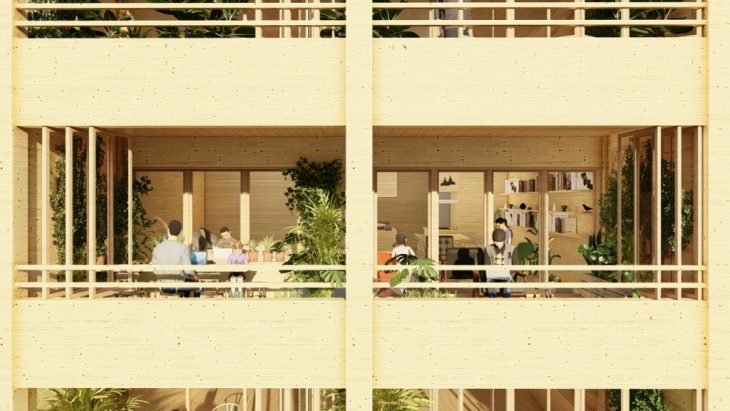 All the apartments will have a large terrace facing south, which acts as a thermal regulator, and will be a fundamental space in periods of confinement allowing the residents to play, rest and work. Likewise, the homes will be prepared to have telework spaces and will be connected to 5G networks, creating social networks at neighborhood-scale for the exchange of resources.
All the apartments will have a large terrace facing south, which acts as a thermal regulator, and will be a fundamental space in periods of confinement allowing the residents to play, rest and work. Likewise, the homes will be prepared to have telework spaces and will be connected to 5G networks, creating social networks at neighborhood-scale for the exchange of resources.
